Introducing Linkurious Entity Resolution: Deduplicating data & finding hidden links for better decision making
To manage risk effectively, build operational intelligence, and make context-based decisions, gaining a clear, comprehensive view of your data and its context is essential. But organizations struggle with duplicate data across sources. Is the John Durant in database A the same person as the John Durant in database B? They’re also missing tools to identify the non-obvious relationships between entities.
Enter Linkurious Entity Resolution. Now available in a stable version via a no-code interface within Linkurious Enterprise, this brand new feature helps generate entity resolved knowledge graphs, providing a single source of truth and a more accurate view of your data. Let’s take a look at how Linkurious Entity Resolution works, what challenges it helps solve, and what else is coming down the line for this feature.
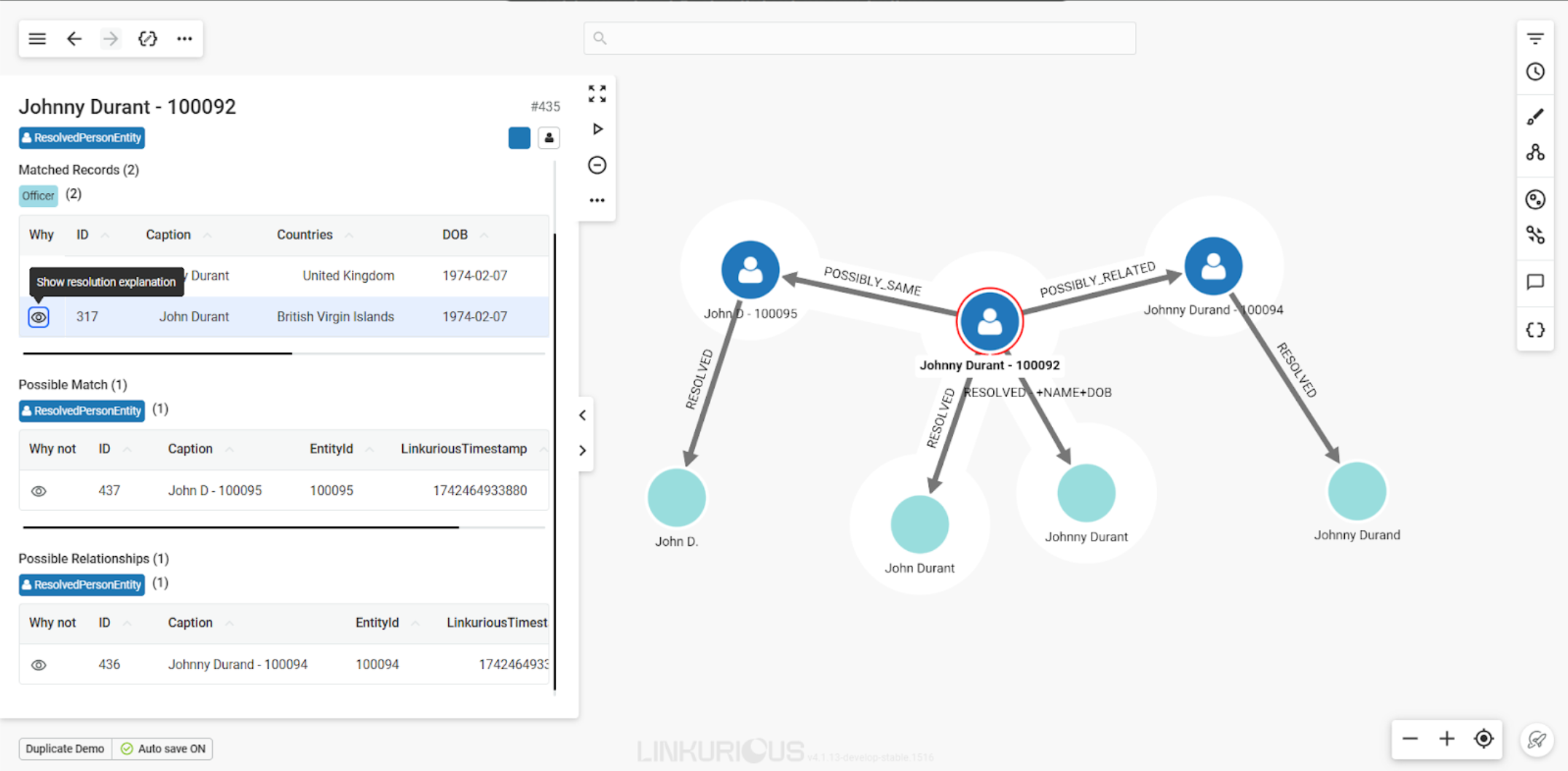
Entity Resolution is the process of identifying whether multiple records relate to the same real-world entity. The process determines if they are the same, related, or not. An entity in this case can be a person or an organization. Linkurious Entity Resolution enables you to unify data such as people and companies, from any number of sources and uncover hidden relationships with efficiency, accuracy, and transparency.
The Senzing technology that powers Linkurious Entity Resolution is a purpose-built AI for real-time entity resolution, based on an entity-centric approach. It finds and consolidates duplicate entities - despite messy data or intentional obfuscation - and discovers hidden connections between entities.
Across industries, data quality is a challenge. According to one survey (1), nearly half of respondents report “data quality” as the biggest challenge in relation to enterprise analytics initiatives. Duplicates that hinder data quality arise for many reasons: the use of different data sources, natural data variations, data entry errors, etc. Yet it is vital to know, for example, whether there are three people performing one transaction each versus one person performing three transactions.
An entity-resolved knowledge graph acts as a single source of truth to shine a light on hidden relationships within your data thanks to increased data quality and accuracy. The result is more accurate analytics, alerting, and investigative work.
In use cases like financial crime or law enforcement, this leads to improved investigative efficiency. While investigating a person or company for fraud, for example, analysts can more efficiently unify data, importing data from publicly available sources and integrating it into their dataset. After resolving entities, users can discover hidden relationships across those datasets, pinpointing relevant information more quickly.
Deduplication of several data sources also leads to a clearer graph that empowers faster decision-making.
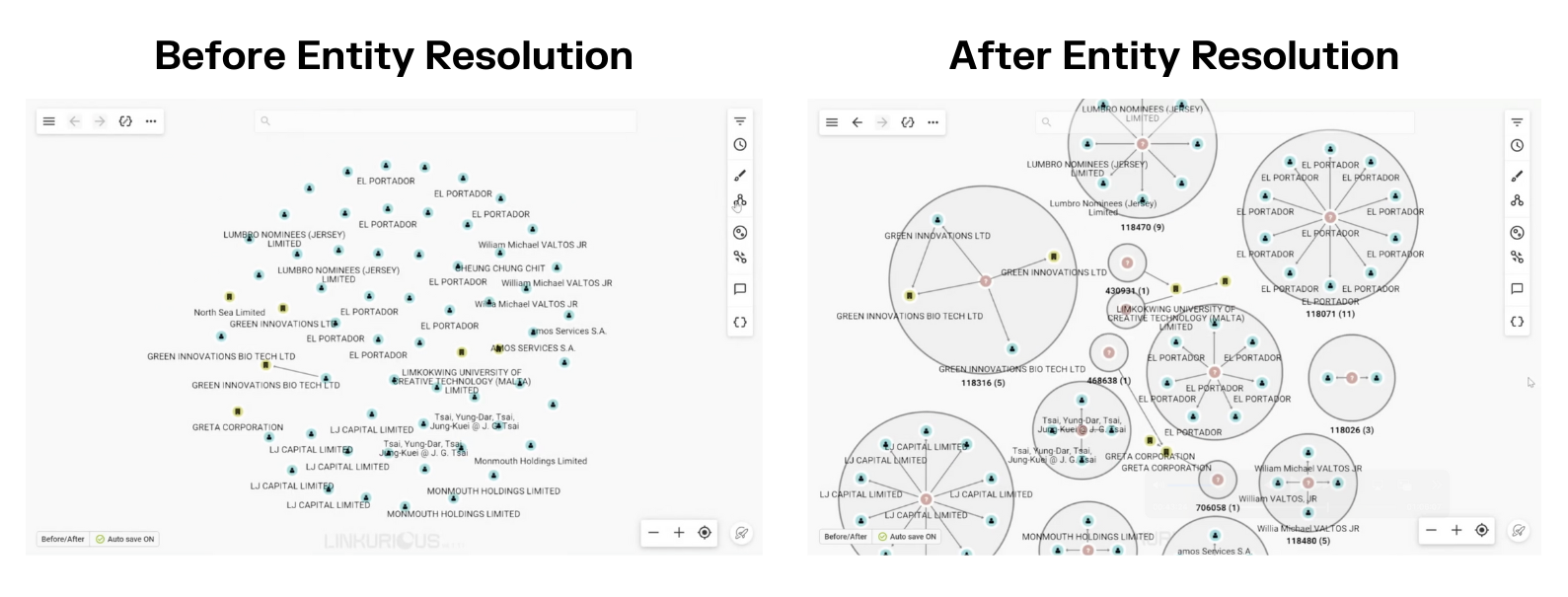
Linkurious Entity Resolution powered by Senzing brings the power of Entity Resolution to you directly in the Linkurious platform, helping you unify data related to people and companies.
Linkurious Entity Resolution stands out from other solutions on the market thanks to its ease of use, transparency, and scalability. Here’s what you can expect from this feature:
- No Entity Resolution expertise required: Configure this feature through the no-code interface that does not require specialized knowledge.
- Minimal data preparation: Users can simply push data in their graph database and the Linkurious-Senzing integration takes care of the data processing.
- Works continuously and in real time: The Entity Resolution process is updated continuously as data is ingested or modified in the graph database, ensuring an always up-to-date entity resolved knowledge graph.
- Explainable results: End users have access to the explanation of the Entity Resolution process so they can understand why records have been matched, partially matched, or are possibly related.
- Always secure: The Entity Resolution process runs in isolation from any server in the cloud. Customers with an on-premise setup and no connection to the internet can benefit from Linkurious Entity Resolution. You can also be sure your sensitive data is not leaving your database.
Once it has been activated in your account, Linkurious Entity Resolution is available directly within the Linkurious user interface. It can be set up via a no-code configuration.
Let’s look at a step-by-step example to see exactly how Linkurious Entity Resolution works.
In this scenario, we have three records, with variations in names and countries, but the same date of birth.
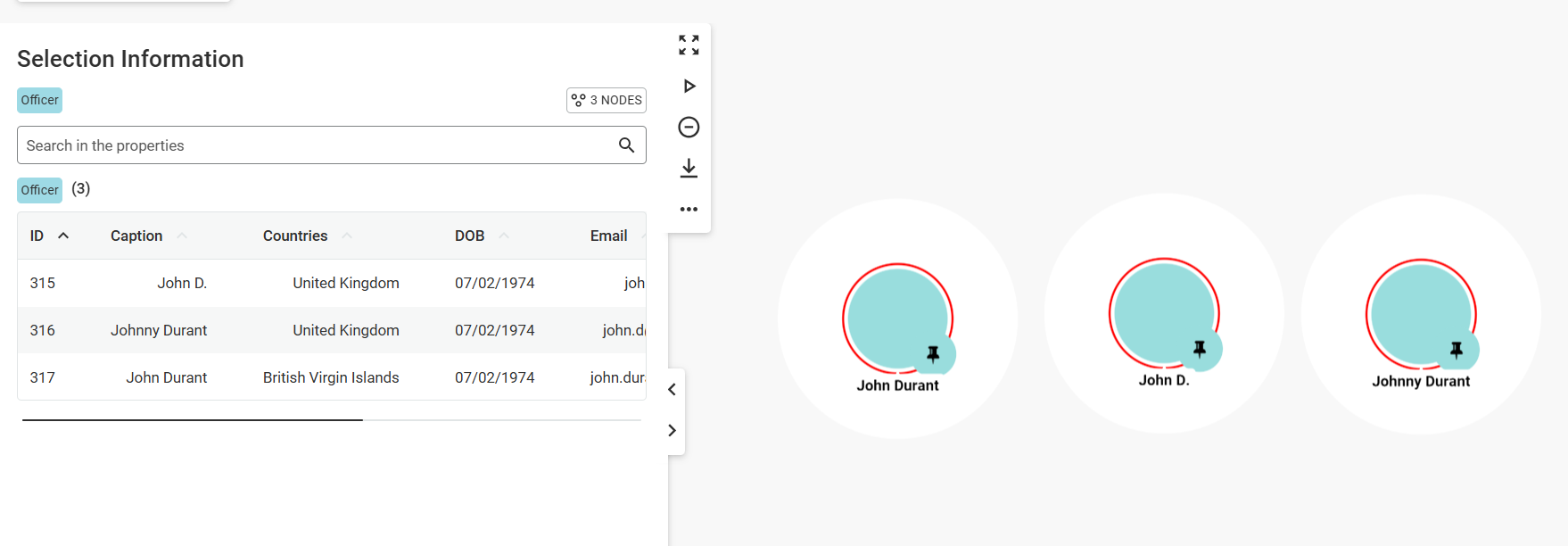
The next step is to map the properties via the Entity Resolution interface.
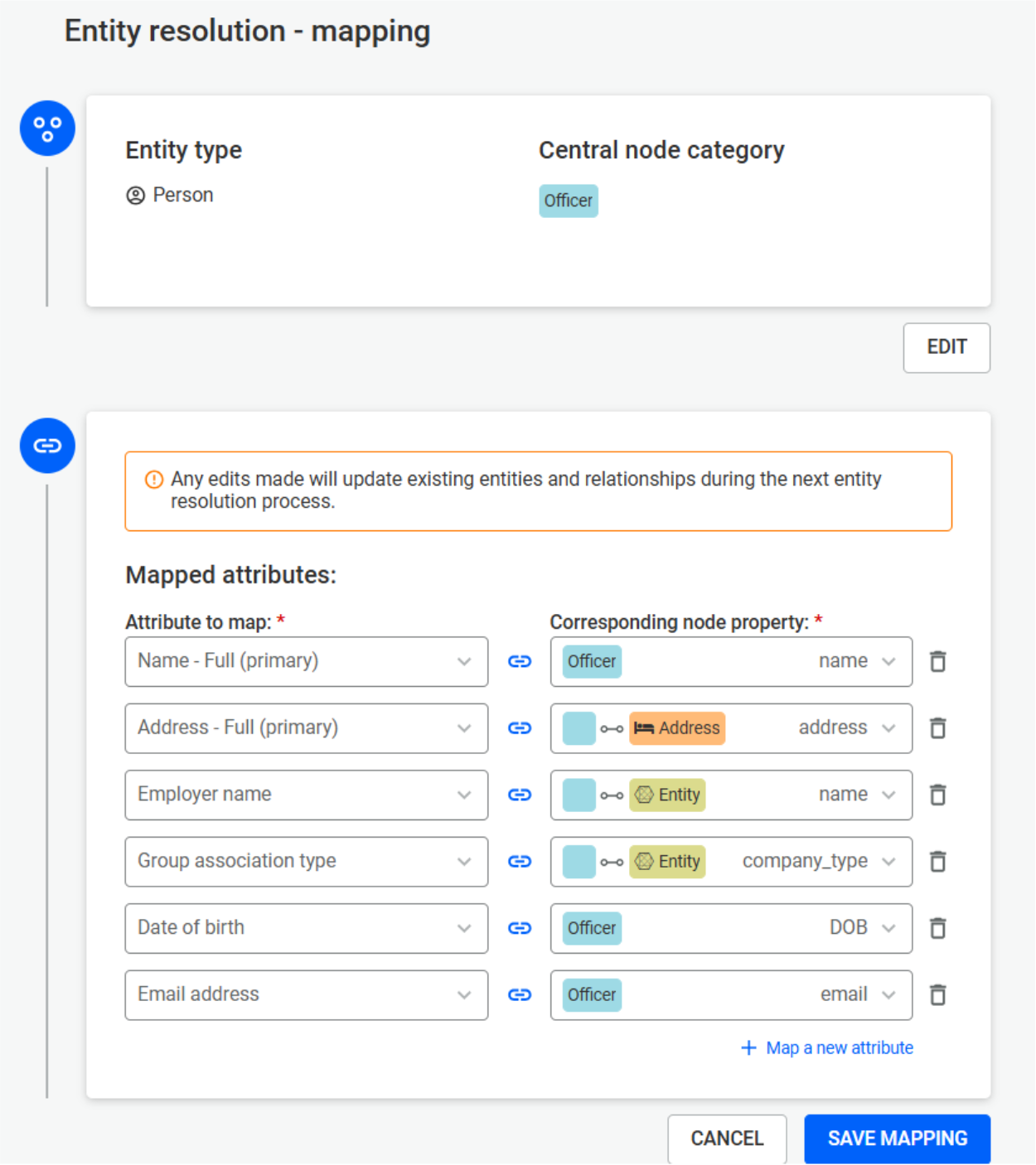
Once you have mapped the properties that are relevant to you and have saved your mapping, you can run Entity Resolution in one click.
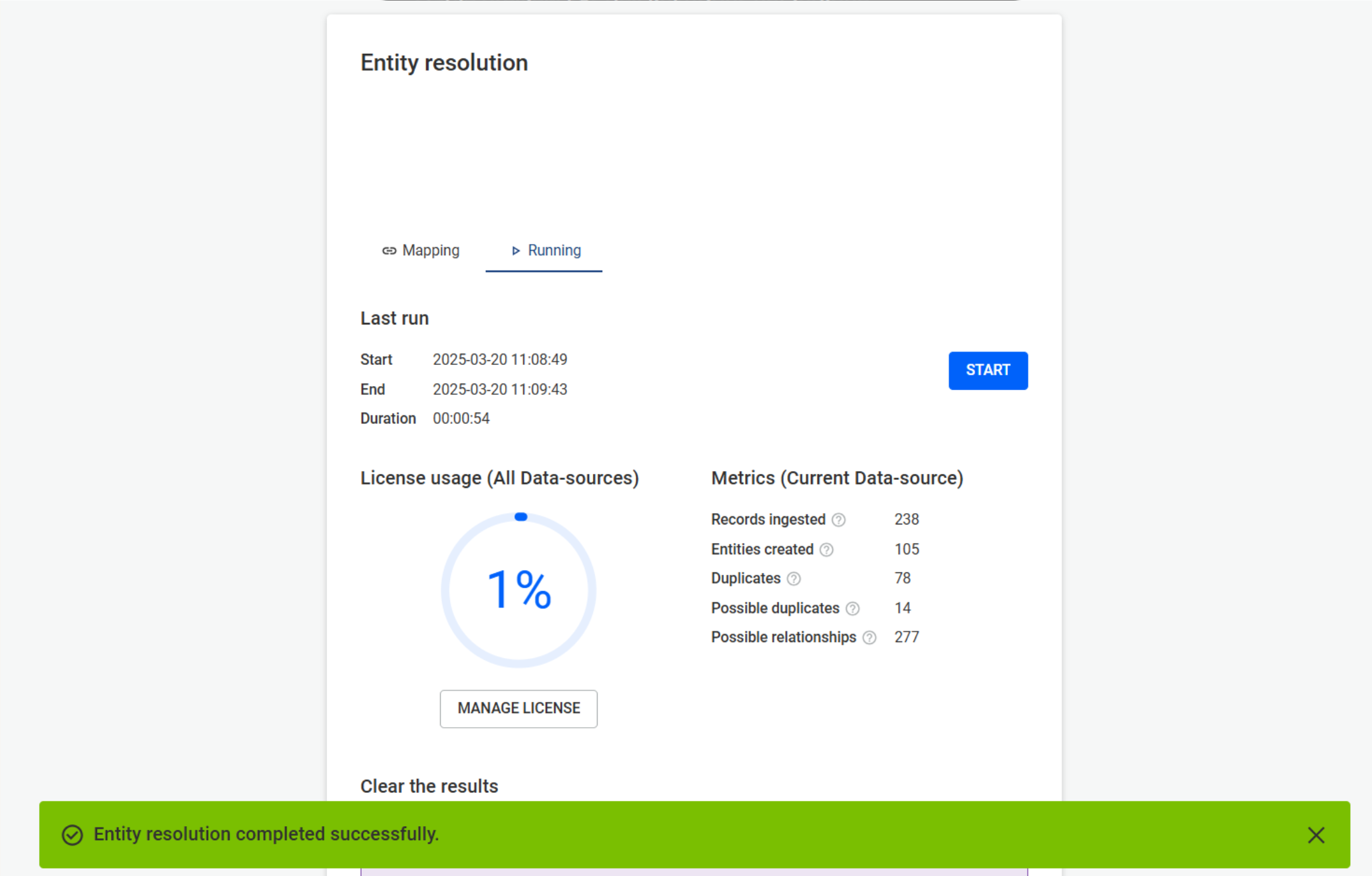
Once Entity Resolution has finished running, you’ll see different metrics within the Entity Resolution window: how long it took to run, as well as various metrics about the data that has been processed. This includes the number of records ingested and entities created (to show the duplicates that have been identified and explain them). You’ll also see the number of entities identified as duplicates, possible duplicates, and possible relationships.
Duplicates are identified matches within the data. Possible duplicates are a likely match. The user can see the explanation for the possible match and decide whether or not this is in fact a duplicate. Possible relationships are not identified as matches, but are added when entities are likely to be related.
From here, you can come back to your visualization, where you’ll see that the records have other nodes related to them, with the category ResolvedPersonEntity.
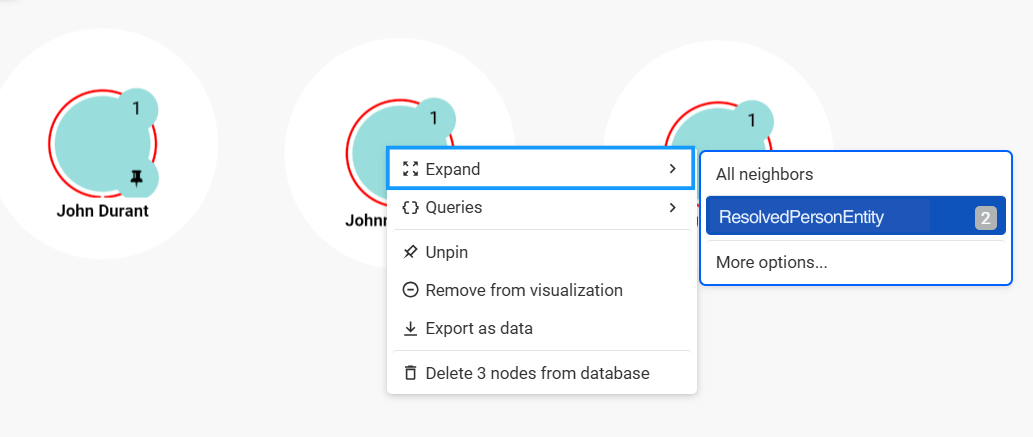
You can expand these nodes. In this case, two nodes have been resolved as they have been identified as being the same entity based on name and date of birth, even though they have a different email address.

A third one is related to another entity and is labeled “possibly the same” as that first entity. The names “John D.” and “Johnny Durant” are close, but not exactly the same.
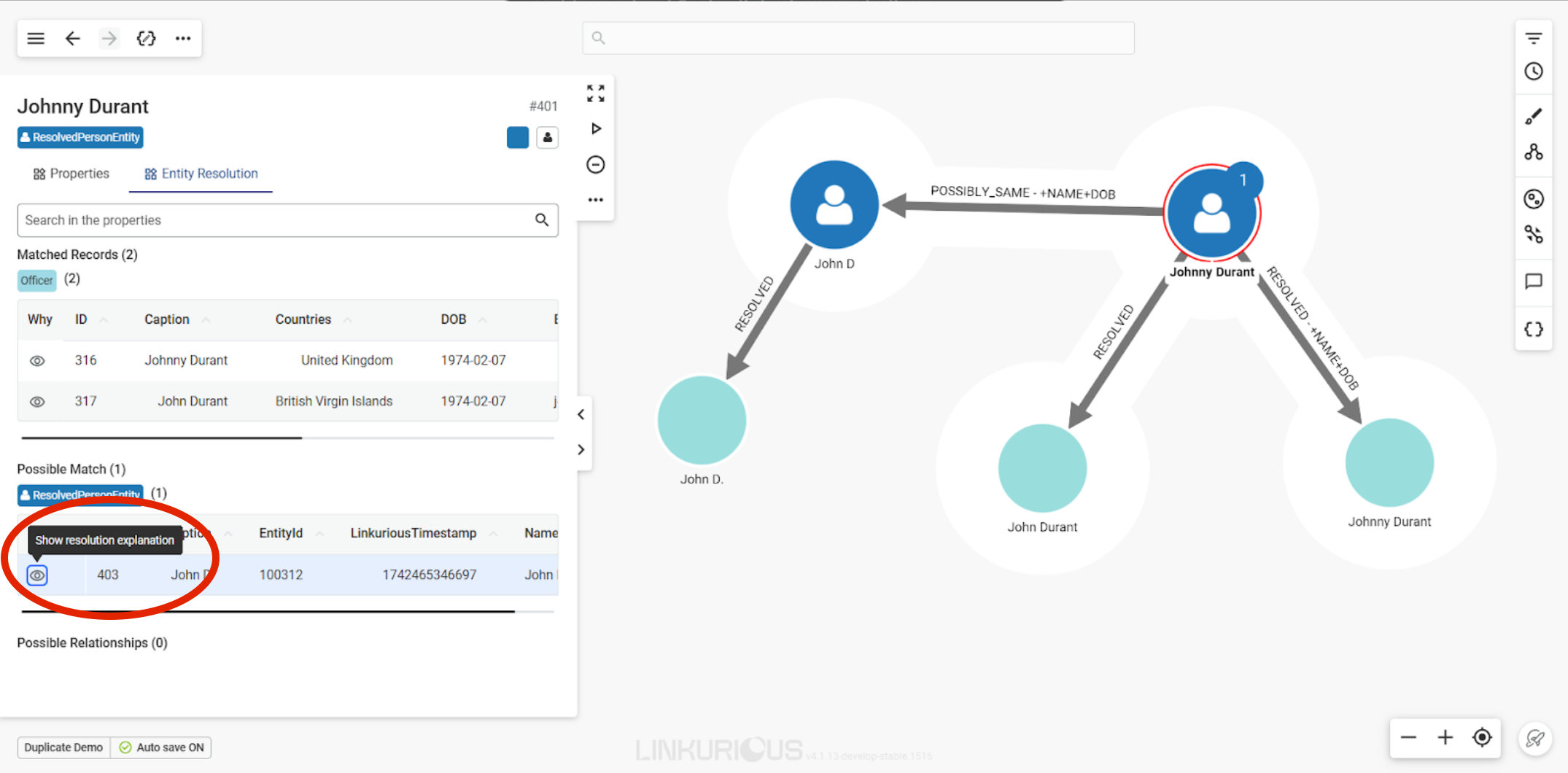
Linkurious Entity Resolution is fully explainable. To understand why two or more nodes have been resolved or labeled a possible match, click on the eye icon in the side panel.
This brings up a window explaining which pieces of data have been matched or not, along with a match percentage for each that shows how similar the data was.
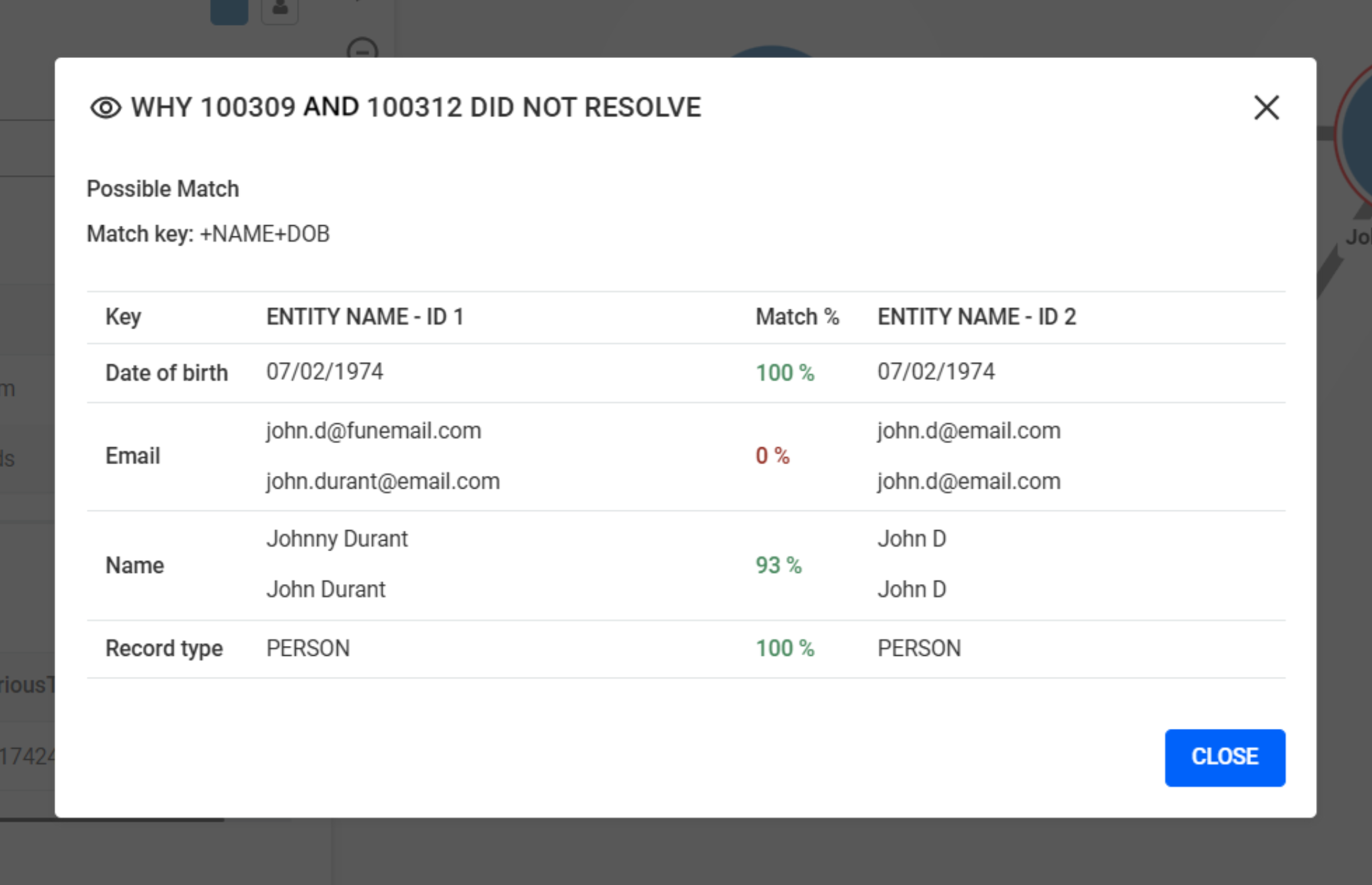
In the case of this dataset, Entity Resolution has uncovered examples of duplicates and non-obvious relationships, while providing clear explanations to the analyst.
The time- and cost-efficiency of Linkurious Entity Resolution distinguishes this new feature from other available solutions. The integration of Linkurious and Senzing is completely seamless and provides a faster time to value compared to other approaches. With Linkurious Entity Resolution powered by Senzing, you get results in hours, not months.
The integration is also more cost-effective than building an entity resolution solution in-house, which takes time, has poorer quality and less scalability. The no-code interface means organizations do not need an entity resolution expert to benefit from this feature. And, there are no hidden costs, delivering a lower total cost of ownership.
See Linkurious Entity Resolution in action. Watch the Entity Resolution live demo using the Panama Papers dataset:
You can learn more about the power of Entity Resolution by watching the full webinar replay.
Contact us or reach out to your customer success manager to get access to Linkurious Entity Resolution today.
(1) 451 Research Voice of the Enterprise: Data & Analytics, Data Management & Analytics 2021
Originally published on 20 March 2025, updated 16 July 2025.
A spotlight on graph technology directly in your inbox.